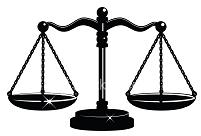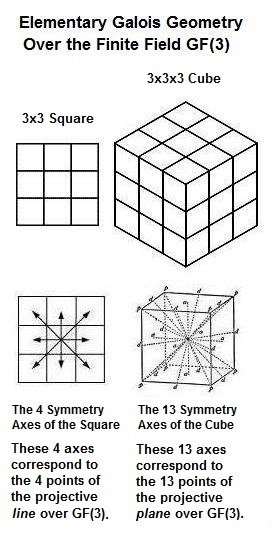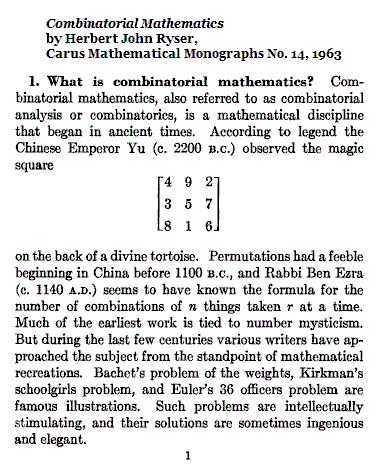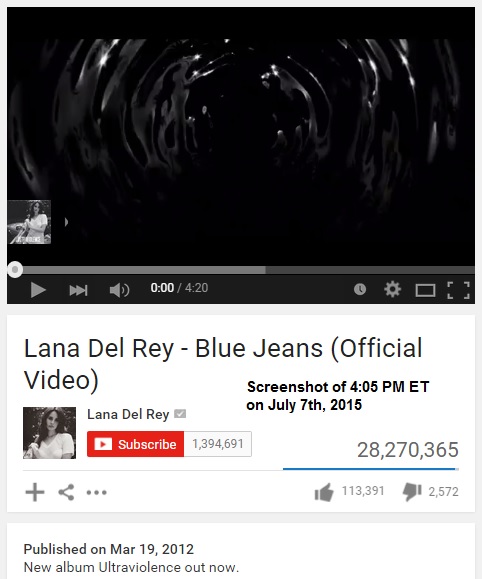( A Chinese designation for the 3×3 square )
Saturday, June 13, 2015
The Holy Field
Wednesday, June 5, 2024
For a future Michael Crichton*— The Tachikawa Hint
Hat tip to Peter Woit for quoting the above yesterday.
* See Crichton in this weblog and the solar Apollo symbols
of CBS Sunday Morning, which this week featured Crichton.
As an Apollo symbol, I prefer the Chinese "holy field" —
a ninefold square.
Monday, April 18, 2022
Tuesday, August 10, 2021
Ex Fano Apollinis
|
Margaret Atwood on Lewis Hyde's "Trickster is among other things the gatekeeper who opens the door into the next world; those who mistake him for a psychopath never even know such a door exists." (159) What is "the next world"? It might be the Underworld…. The pleasures of fabulation, the charming and playful lie– this line of thought leads Hyde to the last link in his subtitle, the connection of the trickster to art. Hyde reminds us that the wall between the artist and that American favourite son, the con-artist, can be a thin one indeed; that craft and crafty rub shoulders; and that the words artifice, artifact, articulation and art all come from the same ancient root, a word meaning "to join," "to fit," and "to make." (254) If it’s a seamless whole you want, pray to Apollo, who sets the limits within which such a work can exist. Tricksters, however, stand where the door swings open on its hinges and the horizon expands: they operate where things are joined together, and thus can also come apart. |
"As a Chinese jar . . . ."
— Four Quartets
|
Rosalind Krauss "If we open any tract– Plastic Art and Pure Plastic Art or The Non-Objective World , for instance– we will find that Mondrian and Malevich are not discussing canvas or pigment or graphite or any other form of matter. They are talking about Being or Mind or Spirit. From their point of view, the grid is a staircase to the Universal, and they are not interested in what happens below in the Concrete. Or, to take a more up-to-date example…."
"He was looking at the nine engravings and at the circle,
"And it's whispered that soon if we all call the tune
The nine engravings of The Club Dumas
An example of the universal— or, according to Krauss,
"This is the garden of Apollo, |
The "Katz" of the August 7 post Art Angles
is a product of Princeton's
Department of Art and Archaeology.
ART —
ARCHAEOLOGY —

"This pattern is a square divided into nine equal parts.
It has been called the 'Holy Field' division and
was used throughout Chinese history for many
different purposes, most of which were connected
with things religious, political, or philosophical."
– The Magic Square: Cities in Ancient China,
by Alfred Schinz, Edition Axel Menges, 1996, p. 71
Saturday, July 3, 2021
Here, There, and Chicago
The above phrase "the intersection of storytelling and visual arts"
suggests a review . . .
Storytelling —

Visual arts —

"This pattern is a square divided into nine equal parts.
It has been called the 'Holy Field' division and
was used throughout Chinese history for many
different purposes, most of which were connected
with things religious, political, or philosophical."
– The Magic Square: Cities in Ancient China,
by Alfred Schinz, Edition Axel Menges, 1996, p. 71
A Midrash for Michener —

For a connection of the above "Holy Field"
with pure mathematics, see Coxeter's Aleph.
Tuesday, October 17, 2017
Plan 9 Continues
See also Holy Field in this journal.
Some related mathematics —
Analysis of the Lo Shu structure —
Structure of the 3×3 magic square:
4 9 2
3 5 7 decreased by 1 is …
8 1 6
3 8 1
2 4 6
7 0 5
In base 3 —
10 22 01
02 11 20
21 00 12
As orthogonal Latin squares
(a well-known construction) —
1 2 0 0 2 1
0 1 2 2 1 0
2 0 1 1 0 2 .
— Steven H. Cullinane,
October 17, 2017
Friday, December 9, 2016
Monday, June 20, 2016
Sacred Space
For further background to this morning's post Plan 9 Continues,
see posts tagged Sacred Space —
Friday, May 27, 2016
Sunday, October 18, 2015
Coordinatization Problem
There are various ways to coordinatize a 3×3 array
(the Chinese "Holy Field'). Here are some —

See Cullinane, Coxeter, and Knight tour.
Sunday, July 12, 2015
Characteristica Universalis
From Wikipedia —
"Many Leibniz scholars… seem to agree that he intended
his characteristica universalis … to be a form of …
ideographic language. This was to be based on a
rationalised version of the 'principles' of Chinese characters…."
See as well O Nine, Chinese Calligraphy, and Holy Field.
Friday, July 10, 2015
Without Border
The previous post's Holy Field symbol,
with border removed, becomes the
Chinese character for "well."

See also The Lost Well.
Thursday, July 9, 2015
Man and His Symbols
A post of July 7, Haiku for DeLillo, had a link to posts tagged "Holy Field GF(3)."
As the smallest Galois field based on an odd prime, this structure
clearly is of fundamental importance.

It is, however, perhaps too small to be visually impressive.
A larger, closely related, field, GF(9), may be pictured as a 3×3 array…

|
… hence as the traditional Chinese Holy Field.
Marketing the Holy Field
The above illustration of China's Holy Field occurred in the context of
Log24 posts on Child Buyers. For more on child buyers, see an excellent
condemnation today by Diane Ravitch of the U. S. Secretary of Education.
Tuesday, July 7, 2015
Haiku for DeLillo*
A music video that opens with remarks by Lawrence Ferlinghetti
at the Last Waltz concert (Thanksgiving Day, Nov. 25, 1976):
"Our Father, whose art's in heaven…" —
For other religious remarks from the above upload date,
Sept. 9, 2011, see Holy Field GF(3).
Click the above "ripple" image for a Grateful Dead haiku
quoted here on Sunday, July 5, 2015.
For another meditation from the second upload date above,
March 19, 2012, see some thoughts on the word "field."
* For the title, see an excerpt from Point Omega .
Saturday, June 20, 2015
Conceptual Art for Basel
The previous post's link to The Lindbergh Manifesto
and Thursday's post on Basel-born artist Wolf Barth
suggest the following —
See as well a June 14 New York Times
piece on Art Basel.
The logo of the University of Basel …
… suggests a review of The Holy Field —
Tuesday, May 12, 2015
Writing Well*
See Stevens + New Haven.
* The above figure may be viewed as
the Chinese “Holy Field” or as the
Chinese character for “Well”
inscribed in a square.
Thursday, February 19, 2015
Tuesday, November 18, 2014
The Abacus Conundrum…

Prequel from 1961 (click image for context):
Detail that may be interpreted as the Chinese
3×3 "Holy Field" and a Chinese temple bell—

"Ting-a-ling." — Kurt Vonnegut.
Thursday, November 13, 2014
Progressive Matrix
Yesterday's post and recent Hollywood news suggest
a meditation on a Progressive Matrix —

Click to enlarge.
"My card."
Structurally related images —
A sample Raven's Progressive Matrices test item
(such items share the 3×3 structure of the hash symbol above):

Structural background —
Tuesday, October 21, 2014
Art as a Tool
Two news items on art as a tool:
Two Log24 posts related to the 3×3 grid, the underlying structure for China’s
ancient Lo Shu “magic” square:
Finally, leftist art theorist Rosalind Krauss in this journal
on AntiChristmas, 2010:

Which is the tool here, the grid or Krauss?
Saturday, May 17, 2014
It’s Time for You to…
See the Field
“There have long been rumors of a mythical Ninth Element
that grants ultimate power to the Wizard who masters it.
The Order of Magick says there is no such thing. But….”
— Website of Magicka: The Ninth Element Novel
William Worthy in Beijing —
This journal on the date of Worthy’s death,
May 4, 2014, had a link to…
Sunday, May 4, 2014
Geometry for Scarlett
Scarlett Johansson stars in a new film, "Lucy," due to be
released on August 8, directed by Luc Besson, auteur of
The Fifth Element (1997). In other pop culture…
"There have long been rumors of a mythical Ninth Element
that grants ultimate power to the Wizard who masters it.
The Order of Magick says there is no such thing. But…."
— Website of Magicka: The Ninth Element Novel
See also, in this journal, Holy Field as well as Power of the Center.
Wednesday, March 26, 2014
Tuesday, July 16, 2013
Child Buyers
The title refers to a classic 1960 novel by John Hersey.
“How do you get young people excited about space?”
— Megan Garber in The Atlantic , Aug. 16, 2012
(Italics added.) (See previous four posts.)
Allyn Jackson on “Simplicity, in Mathematics and in Art,”
in the new August 2013 issue of Notices of the American
Mathematical Society—
“As conventions evolve, so do notions of simplicity.
Franks mentioned Gauss’s 1831 paper that
established the respectability of complex numbers.”
This suggests a related image by Gauss, with a
remark on simplicity—
Here Gauss’s diagram is not, as may appear at first glance,
a 3×3 array of squares, but is rather a 4×4 array of discrete
points (part of an infinite plane array).
Related material that does feature the somewhat simpler 3×3 array
of squares, not seen as part of an infinite array—
Marketing the Holy Field
Click image for the original post.
For a purely mathematical view of the holy field, see Visualizing GL(2,p).
Sunday, October 21, 2012
Saturday, June 2, 2012
Matrix Problem Revolutions
(The sequel to yesterday's Matrix Problem Reloaded)
Wikipedia on the sci-fi weblog io9.com—
Newitz explained the significance of the name "io9":
"Well, io9s are input-output devices that let you see into the future.
They're brain implants that were outlawed because they drove
anyone who used one insane. We totally made that (device) up
to name the blog."
— Jenna Wortham at wired.com, Jan. 2, 2008
From io9.com itself—
"Science fiction writer Ken MacLeod has another term for io9ers.
He calls them rapture fuckers.*"
For the relevance of the term "revolutions" in this post's title, see
Wikipedia on Ken MacLeod.
I prefer to associate the number 9 with The Holy Field.
* MacLeod used this phrase in one of his novels, Newton's Wake.
Saturday, March 24, 2012
The David Waltz…
"At the still point…" — T. S. Eliot
In memory of David L. Waltz, artificial-intelligence pioneer,
who died Thursday, March 22, 2012—
- The Log24 post of March 22 on the square-triangle theorem
- The March 18 post, Square-Triangle Diamond
- Remarks from the BBC on linguistic embedding
that begin as follows—
"If we draw a large triangle and embed smaller triangles in it,
how does it look?"—
and include discussion of a South American "tribe called Piranha" [sic ] - The result of a Cartoon Bank search suggested by no. 3 above—
(Click image for some related material.)

- A suggestion from the Cartoon Bank—

-
The following from the First of May, 2010—

Some context–

"This pattern is a square divided into nine equal parts.
It has been called the 'Holy Field' division and
was used throughout Chinese history for many
different purposes, most of which were connected
with things religious, political, or philosophical."– The Magic Square: Cities in Ancient China,
by Alfred Schinz, Edition Axel Menges, 1996, p. 71 - The phrase "embedding the stone" —
Sunday, January 22, 2012
Year of the Dragon
In China, the Year of the Dragon
has now begun. See Holy Field
in this journal.
Thursday, November 3, 2011
The China Conundrum
 |
"Buckle up!" — Harlan Kane, in the spirit of strategic stupidity.
Saturday, May 1, 2010
An Education
天鈞
Made famous by Ursula K. Le Guin
as the book title "Lathe of Heaven,"
this Chinese phrase, tianjun, apparently
means something more like "Scales of Heaven"–
an appropriate image for Law Day 2010.

An anonymous forum user says that
"…if you switch the two characters around,
you get: 鈞天, which is one of
the nine heavens, more specifically,
the middle heaven."
This is supported by a
non-anonymous source:
"I follow A.C. Graham’s translation of
Juntian as 'Level Heaven (the innermost
of the nine divisions of heaven)';
he renders Juntian guangyue as
'the mighty music of the innermost heaven.'"
— "Music in the World of Su Shi (1037-1101):
Terminology," by Stuart H. Sargent,
Colorado State University,
Journal of Sung-Yuan Studies 32 (2002), 39-81
The Nine Divisions of Heaven–
Some context–

"This pattern is a square divided into nine equal parts.
It has been called the 'Holy Field' division and
was used throughout Chinese history for many
different purposes, most of which were connected
with things religious, political, or philosophical."
– The Magic Square: Cities in Ancient China,
by Alfred Schinz, Edition Axel Menges, 1996, p. 71



.jpg)





















